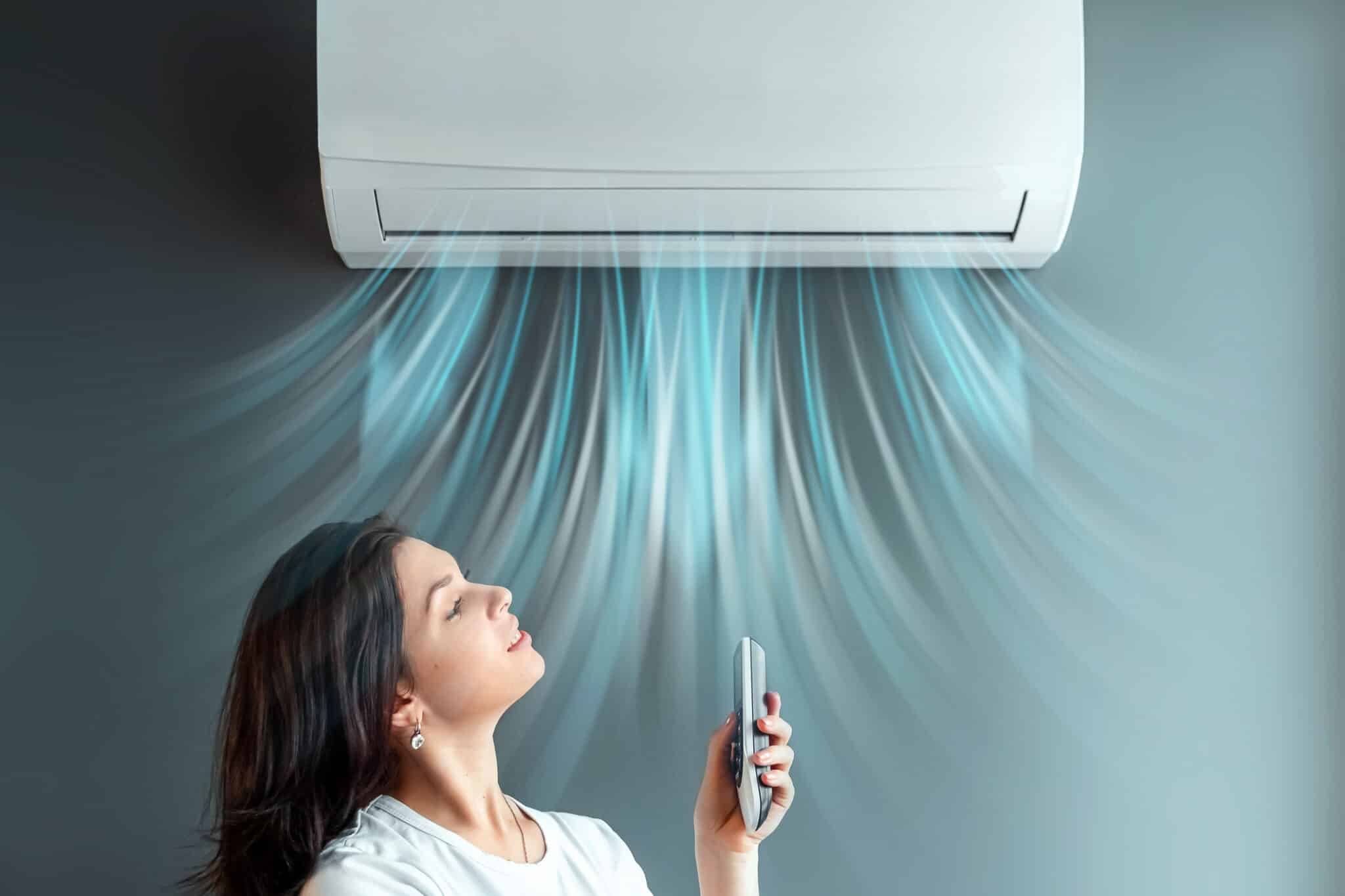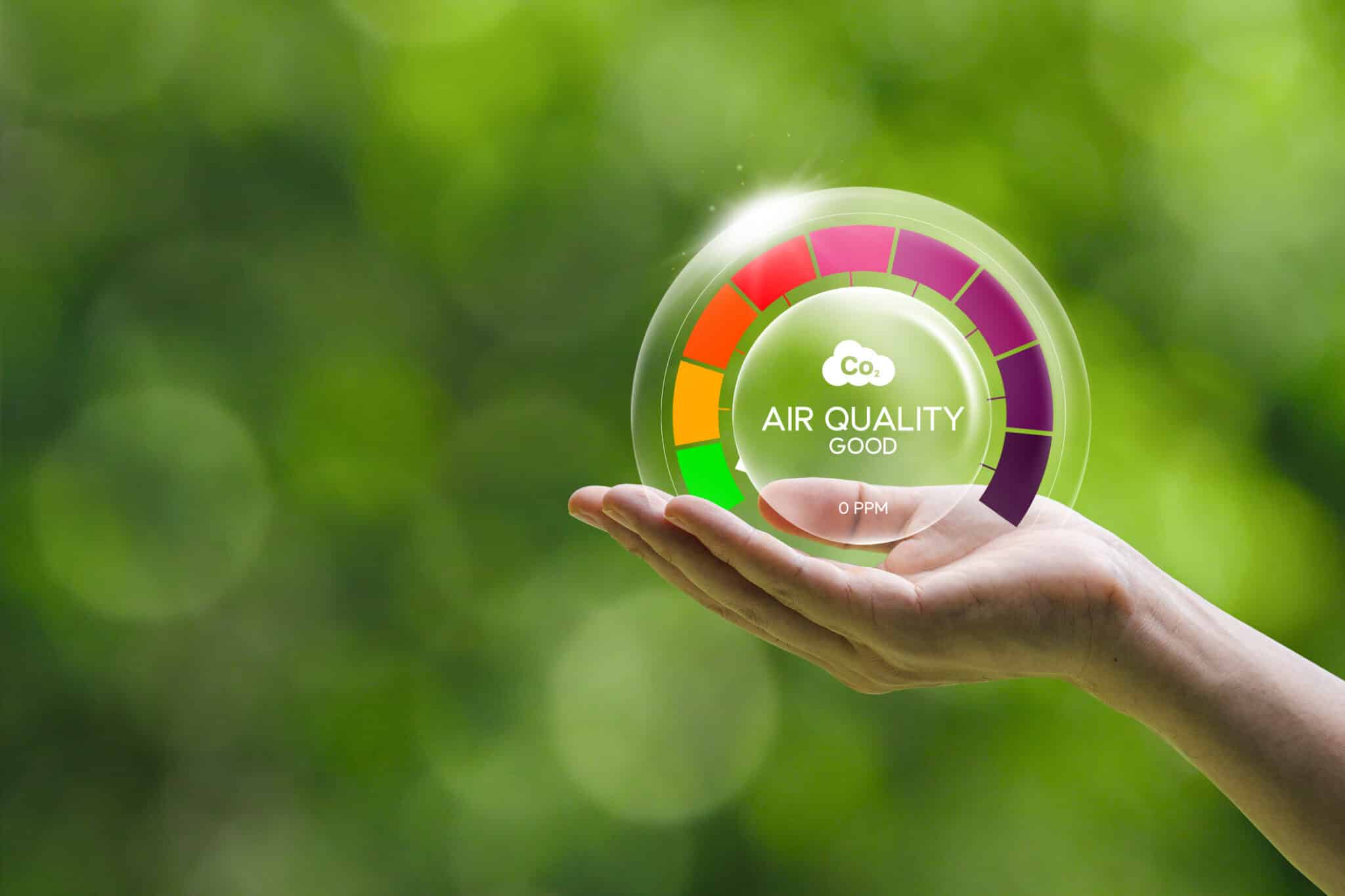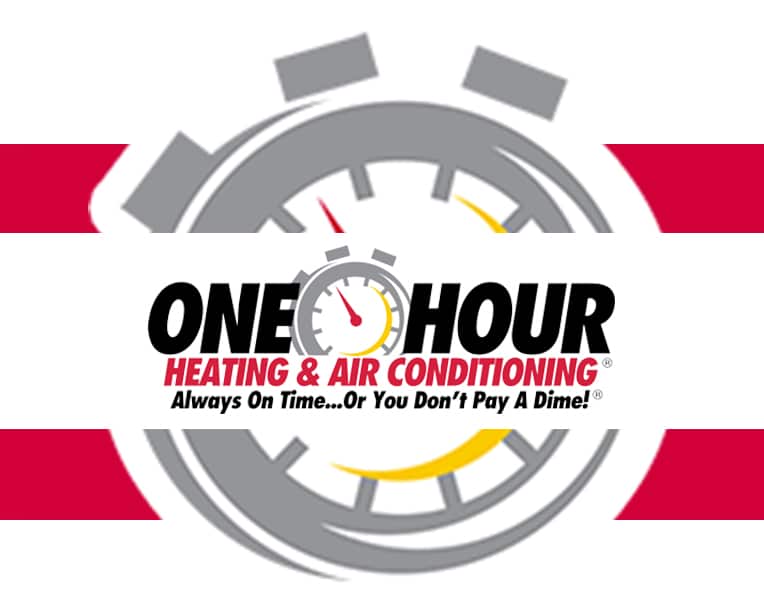Indoor Air Quality – The air in your home can impact your health, especially before spring when allergens like pollen and mold show up. To improve it, make sure there’s good airflow, keep your HVAC system in good shape, and cut down on things that pollute the air indoors. Clean often, use air purifiers, and check the air quality to keep your space healthier.
Why Indoor Air Quality Matters
Ever think about how the air inside your home affects your health?
The air you breathe could be filled with dust, allergens, and mold, especially as spring nears in San Diego, CA.
During this time, pollen and fungal spores become more active, sneaking into your home and causing sneezing or itchy eyes before you even go outside.
Poor air inside your home can lead to “sick building syndrome,” which brings symptoms like burning eyes, scratchy throats, and headaches.
Poor ventilation, leftover smoke, and built-up dust can make things worse.
If you don’t take care of it, these pollutants can turn your home into an allergy hotspot—more so during spring when allergens are more active.
HVAC systems that are not regularly maintained or cleaned can add to the problem.
They may circulate mold, bacteria, and dust throughout your home, worsening allergies and causing breathing issues.
To stay healthy and comfortable, it’s important to care for your HVAC system and ensure that fresh, clean air is circulating throughout your home, especially before spring arrives.
Indoor air quality matters because cleaner air not only helps you feel better but also makes your home a more peaceful place to relax.

Common Pollutants Affecting Indoor Air Quality in San Diego, CA
The air inside your home in San Diego, a city known for its beaches and mild weather, can run into unique problems.
Common pollutants may harm your air and cause breathing issues if you don’t take care of them.
Dust is one big problem. Its tiny bits float around and get spread by HVAC systems.
Pollen is another. It gets worse when seasons shift, making spring tough for those with allergies.
Thanks to San Diego’s greenery and mild winters, these allergens often stick around and sneak indoors.
Household chemicals are also a problem.
Cleaning supplies and air fresheners give off VOCs (volatile organic compounds) that can make asthma and other breathing issues worse.
Smoke from cooking or fireplaces adds to the problem, so good ventilation is key.
The city’s climate plays a part too.
San Diego’s coastal air often brings more humidity, which helps mold grow in places with bad airflow.
Mold can cause bad health problems, like stronger allergic reactions or even “sick building syndrome.”
To address these pollutants effectively, work with professionals who understand the needs of indoor air quality in San Diego’s unique climate.
Solutions like high-quality air filters and HVAC maintenance can go a long way in keeping the air fresh and healthy—perfect for the active San Diego lifestyle.
For personalized advice or help, reach out to One Hour Heating & Air Conditioning of San Diego.
Simple Ways to Improve Indoor Air Quality
Improving indoor air quality is easier than you think, but it takes some effort.
Start by improving ventilation. Stale air holds dust, allergens, and harmful chemicals. Open your windows during cooler times of the day—especially in a region like San Diego—to let fresh air in and push bad air out.
Next, consider upgrading your air purifier. Use one with a HEPA filter to catch tiny particles like pollen and mold that other filters might miss. Also, regularly check your HVAC filters—at least every three months, or as recommended by a professional—especially if you’re running your system frequently, such as during spring allergies or summer heat. Dirty filters can reduce efficiency and trap pollutants that may affect air quality indoors.
Keeping your space clean is vital, too. Vacuum carpets, dust surfaces, and use natural cleaning products to reduce chemical pollutants in your home.
Avoid activities like smoking indoors or overusing aerosol sprays, as these can release harmful toxins into the air.
A clean, well-maintained home promotes healthier air.
If you’re ready to take the next step in improving indoor air quality, reach out to One Hour Heating & Air Conditioning of San Diego, CA, for expert advice and assistance.
How Seasons Affect Indoor Air Quality in San Diego
Spring in San Diego isn’t all flowers and beach days—it’s also peak allergy season.
Pollen and mold spores spike during this time, making their way into homes and impacting indoor air quality.
The region’s high humidity can worsen the situation by encouraging mold growth and trapping pollutants indoors.
If not addressed, this can lead to health discomforts like headaches, itchy eyes, and trouble breathing.
San Diego’s subtropical climate also brings gradual temperature changes, which affect how air circulates and gets filtered in your home.
HVAC systems, essential for comfort, can unintentionally recirculate allergens and dust without regular maintenance.
That’s why proper ventilation and consistent HVAC upkeep are vital to maintaining good air quality throughout the year.
By understanding how factors like pollen, moisture, and shifting temperatures affect your indoor space, you can take proactive steps to prevent air quality issues.
Preparing your home now not only reduces allergy symptoms—it fosters a healthier, more comfortable environment.
Improved Indoor Air Quality is something you’ll appreciate with every breath!
How Your HVAC System Affects Indoor Air Quality
Your HVAC system plays a big role in keeping the air in your home clean and easy to breathe.
If it’s cared for properly, it can help cut down on pollutants like dust, mold, and bacteria that cause allergies and breathing problems.
Regular upkeep not only boosts indoor air quality but also helps your system last longer—a win for both comfort and efficiency.
Switching to better HVAC filters can also make a big difference.
High-quality filters, such as HEPA filters, are designed to trap small allergens that often appear during seasonal changes in San Diego, CA.
If allergies worsen during certain times of the year, consider upgrading to filters specifically crafted to reduce allergens like pollen and pet hair, helping your home feel fresher and more comfortable.
Using tools like humidifiers or dehumidifiers can also help.
The coastal weather in San Diego can cause shifts in humidity, which may lead to mold or overly dry air.
Adding these tools to your HVAC system can help regulate humidity levels, ensuring your home remains comfortable and the air stays healthy.
For fresher, healthier air, count on a trusted HVAC expert like One Hour Heating & Air Conditioning of San Diego to take care of your system.
Why Regular Duct Cleaning Matters
When was the last time you thought about your air ducts?
If it’s been a while, cleaning them might be just what your home needs for fresher air and better efficiency.
Over time, dust, dirt, and allergens build up in your ducts and circulate through your HVAC system.
In San Diego’s allergy-heavy spring, this can make breathing harder and worsen allergy symptoms.
Clean ducts help reduce allergens and improve indoor air quality.
Dust, pet dander, and even mold can hide in your ducts, spreading tiny particles that may cause anything from mild discomfort to more serious health problems.
Cleaning them gets rid of these pollutants, making the air in your home healthier.
Duct cleaning also helps your HVAC system run better and last longer.
Blocked airflow makes the system work harder, which uses more energy and causes wear over time.
Regular cleaning not only makes the air cleaner but also improves system efficiency and longevity.
Wondering if it’s time to clean your ducts?
Watch for musty smells, dust near vents, or weak airflow.
If you notice these issues, it’s time to call the pros at One Hour Heating & Air Conditioning of San Diego, CA.
Their team will ensure your ducts are thoroughly cleaned and your home is ready for spring.
Using Plants for Cleaner Air
Want to freshen up your home and improve indoor air quality at the same time?
Adding certain plants is a great way to do both.
They look good and can help filter indoor pollutants.
Top Indoor Plants for Better Air
Some of the most commonly recommended plants for promoting better air indoors include peace lilies, snake plants, and spider plants. These plants are often noted for their ability to mitigate certain household toxins like benzene, formaldehyde, and carbon monoxide. While plants can’t replace professional solutions, they may complement efforts to maintain a cleaner and healthier home environment.
How to Keep Your Plants Healthy
To keep your plants in good shape, place them where they get enough light—just avoid harsh, direct sunlight.
Water them based on their needs but don’t overdo it—too much water can cause root rot or mildew, which can actually harm air quality indoors.
Regular care can help your plants thrive as an aesthetic and calming addition to your space.
Choosing Allergy-Friendly Plants
If you’re concerned about allergies, be cautious when selecting plants.
Avoid those with highly fragrant flowers or excessive pollen, as they can irritate sensitivities.
Opt for low-pollen plants and thoroughly research your choices to ensure they align with your specific needs for maintaining comfort inside your home.
If you’re experiencing ongoing air quality issues or discomfort in San Diego, CA, consider reaching out to One Hour Heating & Air Conditioning of San Diego for professional indoor air quality solutions.
Tackling Mold and Mildew in San Diego Homes
Mold and mildew thrive in San Diego’s humid, coastal weather.
Bathrooms, kitchens, and basements are common trouble spots because of high moisture levels.
Check these areas often for signs like dark stains, musty smells, or peeling paint.
Don’t forget to look in hidden spots like under sinks, around window frames, and inside HVAC systems—mold loves out-of-sight places.
To stop mold, focus on keeping moisture under control.
Use exhaust fans when cooking or showering, and think about getting a dehumidifier for damp rooms.
Clean your gutters regularly so water doesn’t pool near your home and cause leaks.
If you find mold, avoid handling larger or stubborn patches on your own—instead, call in professionals for a thorough and safe removal.
Don’t ignore mold—it’s more than just ugly.
Long-term exposure can negatively impact Indoor Air Quality by triggering allergies, asthma, and even lung issues.
Keep your home safe by staying on top of it.
For expert help, trust One Hour Heating & Air Conditioning of San Diego.
They offer HVAC solutions designed to improve Indoor Air Quality and address humidity concerns, tailored for San Diego’s unique environment.
How Humidity Levels Affect Indoor Air Quality
Maintaining the right humidity in your home is essential for Indoor Air Quality.
When humidity is off—either too high or too low—it can lead to significant issues.
Excess moisture fosters mold, mildew, and dust mites, all of which can trigger allergies and respiratory problems.
Conversely, air that’s too dry can leave your skin, nose, and throat feeling irritated, even in the pleasant climate of San Diego, CA.
What’s the ideal range? Experts suggest maintaining 30–50% indoor humidity.
Achieving this range may require professional support to ensure your home is equipped with the right tools.
With San Diego’s changing weather through the seasons, regular HVAC maintenance from One Hour Heating & Air Conditioning of San Diego can help your system maintain optimal humidity levels efficiently.
Taking small steps—like using exhaust fans in the bathroom, sealing window leaks, or speaking with an expert to install a smart humidistat—can go a long way in keeping humidity balanced.
Proper humidity control is about more than just comfort; it directly impacts your health and home.
Your lungs will thank you!
Tools to Track and Improve Indoor Air
Checking indoor air quality is now easier with smart air monitoring tools.
These gadgets measure things like carbon dioxide, VOCs (volatile organic compounds), and tiny particles that can affect the air you breathe.
Many also track temperature and humidity, helping you improve both your comfort and health.
When choosing an air monitoring device, look for features like real-time alerts, smart home compatibility, and detailed app tracking.
Some devices even have additional features that integrate with your HVAC system for enhanced convenience.
Monitors can help track changes over time, making it easier to manage seasonal issues in San Diego, CA, like high pollen levels or coastal humidity.
The right tools allow you to act fast—whether it’s adding ventilation, swapping filters, or calling pros like One Hour Heating & Air Conditioning of San Diego.
Cleaner air isn’t just nice to have—it’s key to a healthier, more comfortable home.
How to Check Your Home for Radon and Harmful Pollutants
Radon and other pollutants can silently harm your health if ignored.
Radon, a radioactive gas that forms naturally, is one of the top causes of lung cancer.
It can seep into your home through cracks in the foundation, so testing is key to keeping your family safe.
If you’re concerned, consider getting your home tested for radon.
Use a radon test kit from a trusted source or seek professional testing services.
Place the device in the lowest part of your home and follow the directions carefully for accurate results.
Short-term tests can provide quick feedback, but long-term testing is often recommended for a more accurate picture.
Other pollutants that affect indoor air quality, such as VOCs (volatile organic compounds) and carbon monoxide, can also go unnoticed.
Home air monitors are helpful tools that can identify potential issues.
However, they should complement, not replace, a professional inspection for long-term safety.
If radon or other harmful pollutants are found at high levels, don’t try to handle the issue yourself.
A professional is best equipped to address concerns such as poor ventilation or structural problems.
One Hour Heating & Air Conditioning of San Diego offers trusted solutions to improve indoor air quality and make your home safer and healthier in San Diego, CA.
Contact us for professional guidance and services.
How to Create a Simple Maintenance Plan
Maintaining indoor air quality throughout the year doesn’t have to be hard.
The key? A good maintenance plan.
With the season changing, now’s a great time to focus on your HVAC system and home cleaning.
Start with HVAC maintenance. Change filters regularly to block dust, pollen, and mold—especially in areas like San Diego, CA, where spring allergies can be a concern.
For optimal performance and safety, schedule professional inspections and maintenance for your HVAC system at least twice a year.
Regular servicing not only ensures your system runs efficiently but also helps maintain optimal air quality inside your home.
Add deep cleaning to your routine.
Dust furniture, carpets, and couches often to reduce trapped dirt and allergens.
Pay close attention to areas prone to moisture, such as the bathroom or kitchen, to prevent mold growth.
Use a vacuum with a HEPA filter to capture smaller particles that could cause irritation.
Lastly, take preventive steps to keep the air fresh.
Consider using air purifiers and maintaining indoor humidity levels between 30-50%.
This helps inhibit mold growth without overly drying the air.
Following these steps will improve indoor air quality and create a healthier living environment.

FAQs
What causes bad indoor air quality?
Dust, pollen, mold, mildew, pet dander, and chemicals from household products are the biggest problems. Poor airflow and neglected HVAC systems can make it worse.
How do I know if my home’s air is bad?
You might notice recurring allergies, headaches, breathing problems, or a musty smell. Seeing mold or a lot of dust buildup can also be sign of poor air quality.
Do plants help clean indoor air?
While some plants, like snake plants or peace lilies, may help slightly improve indoor air quality by absorbing certain toxins, they are not a substitute for maintaining clean air with proper HVAC systems and ventilation. If allergies are a concern, avoid introducing plants that could aggravate them.
How often should I maintain my HVAC system?
You should have your HVAC system professionally inspected and maintained twice a year, usually before major seasonal changes, to ensure it’s running efficiently and improving indoor air quality.
How can I manage indoor humidity in coastal areas like San Diego, CA?
Use a dehumidifier during humid months and make sure your HVAC system is properly maintained. Keeping indoor humidity levels between 30% and 50% will help prevent mold growth and ensure a comfortable living environment.



















